| T O P I C R E V I E W |
| Bobakman |
Posted - 12/24/2022 : 11:31:04
I was searching through the forums using "Factory Calibration" as the query. I read through
these posts and would like to know what method is used at the GQ Electronics factory for calibrating the 600+ model?
I love the fact that built into the 600+ is a three point calibration selection as well as a tube dead time setting and more.
I also reviewed some detailed posts on calibration which are above my full understanding.
Do I need to calibrate my 600+ for what I am currently using it for the answer is No.
Would I like to have my unit calibrated to a specific source such as CS137 yes I would if it is not currently so.
It would be nice if GQ electronics would include a calibration results data sheet for each unit at time of purchase, just my thoughts.
I found this document Link below specific to instrument calibration from the NRC it is a good deal if information.
[https://www.nrc.gov/docs/ML1122/ML11229A690.pdf]
Bob |
| 59 L A T E S T R E P L I E S (Newest First) |
| EmfDev |
Posted - 02/06/2023 : 14:16:14
@Bobakman, your device may be experiencing different scenario as denistoulouse. His device only blinks/ticks but you said your device produces a burst of ticks? |
| EmfDev |
Posted - 02/06/2023 : 12:52:09
@Denis, support sent you emails multiple times but it keeps on bouncing back. Also we sent your report to our engineering team to review. |
| denistoulouse |
Posted - 02/05/2023 : 11:00:16
Salut Damien,
Yes the diode solution is attractive, but it is not very robust to EMC. When the diode does not conduct in the absence of detected particle, the output of the tube is maintained by 24 Ko and the capacity.
In the event of radiated interference, the base of the transistor may trigger interference pulses. In my proposed solution, the resistor R15 lowered to 3k9 is very low impedance whatever the case, which ensures increased robustness to local interference.
In addition, I would not put any capacity in order to keep the duration of the pulse of the tube minimal.
In case of EMP pulse >:-S, my diagram should survive and count the particles while in the other solution, the diode and the transistor might be blown :-)
As someone would say: "Mastery is acquired by studying, with everything becoming simple"
Denis :-) |
| Damien68 |
Posted - 02/05/2023 : 01:19:02
quote:
Originally posted by denistoulouse
@ Bobakman,
thank you for analog application note. I found this one too
https://www.analog.com/media/en/reference-design-documentation/reference-designs/cn0536.pdf
They use the same principle, with a voltage regulation at the first diod elevator stage only to not have a too high leakage current on 500 V.
Denis
@denistoulouse, on the Analog-Devices app note, they placed a diode to limit the height of the pulse to 3v3+0.6v and directly reduce the capacitor discharge time.
following the same idea, if I had a 600+, I would have tried to place two diodes in series between the cathode of the tube and the ground of the PCB to limit the pulse to 1v2, and adjust resistor and capacitance values to this new configuration

personally I prefer to take the pulse on the anode as in their second diagram, but their second diagram is not perfect because their capacitive divider will place a capacitive load directly on the anode of the tube which is not good at all . to take the signal on the anode it is better to replace the 7.5M resistor by two resistors in series to form a first resistive divider and connect the detection cap to the midpoint of these 2 resistors. for example taking 330kohms and 6.8Mohms to divide by 22
but taking the pulse on the anode makes it more sensitive to noise from the HV generator so it's require additional filter on the high voltage générator output.
|
| denistoulouse |
Posted - 02/04/2023 : 13:05:55
@ Bobakman,
thank you for analog application note. I found this one too
https://www.analog.com/media/en/reference-design-documentation/reference-designs/cn0536.pdf
They use the same principle, with a voltage regulation at the first diod elevator stage only to not have a too high leakage current on 500 V.
Denis |
| denistoulouse |
Posted - 02/04/2023 : 12:51:22
Hi Bobakman,
I haven't talked about it, but indeed, the choke which is used for the high voltage power supply, located on the board opposite the on/off button, radiates a field of 300 nTp nanotesla peak at 10 cm above the GMC case (measurement limit of my device), with an average field of only 10 nanotesla, which indicates a very low duty cycle. Its spectral content ranges from approximately 30 KHz to 250 kHz and its recurrence is 400 *S (2.5 kHz).
Hey, it doesn't mean anything to you? These emitted magnetic pulses bathe the LND7317 tube, and are not a problem if the electronics and the card are well managed from an EMC point of view.
On the other hand, people sensitive to pulsed EM waves could be bothered by tingling in the hand if they held the device for a long time.
Likewise, I wouldn't recommend putting the device in your pocket close to your heart...
A toroidal choke istead of ongitudinal one would suffice to attenuate this huge leakage field.
Denis |
| ullix |
Posted - 02/03/2023 : 23:52:19
I'll book this under false alarm.
Too bad, the problem with the GMC-600+ remains ... |
| Bobakman |
Posted - 02/03/2023 : 20:16:58
Wow I just retired this week from 39+ years working with and around Medium and high voltage equipment at power plants as an operator and Electrical and mechanical technician. This discussion is more than interesting and I wish we had a full schematic of the 600+ to reference but I assume it's Propitiatory.
I would often find impending equipment failure by the actual electrical "noise" the equipment was generating. I see a similarity here. I use my 600+ for searching and validating antiques that I collect. Many times while the speaker was enabled (mostly not so as not to gain attention) I would notice clicks that would occur as a quick burst I always thought this was due to "random decay" events but it has happened numerous times and always in the same manner and after reading the posts here I now believe it may be connected to a poorly designed HV power supply as seems to discovered by forum member Denistoulouse.
I found an article here that may shed a bit of light perhaps?
[https://www.analog.com/en/design-notes/bias-supply-powers-lowpower-geigermueller-tube.html]
With no 600+ factory schematic it's hard to say if it's an over all design error or just a few component issues that may be the possible cause if in fact it is really a HV PS issue. I won't even dare go into the software/firmware aspects.I will let you engineers handle it I am just a simple Power Plant technician now retired collecting antiques LOL!
Great Discussion, Great Forum and Greater Members!
Bob
|
| denistoulouse |
Posted - 02/03/2023 : 13:44:58
@Ullix, Damien68,
Please do experiment by yourself on your GMC600+ or GM counter you have. I gave my technical informations, I can not discuss for a long time.
GQ has "cards in hands" to check if my modifications are right or not, but I am surprised that Mark from GQ did not respond to my technical mail ?
@Ullix, it is not 2.1 Mo, it is R13 100k+ R15 3,9k = 103.9 k. R13/R15 divides by (3.9/(100+3.9) the 35V GMT pulse (my probe is 10 Mo & capacitive adjusted :)
Denis |
| denistoulouse |
Posted - 02/03/2023 : 13:34:38
quote:
Originally posted by ihab17
quote:
Originally posted by denistoulouse
I don't have the same forum possibilities on my screen .. nor proposition to add files or pictures ? is it BRAVE browser ?
I think I know what is your problem... I will send you a short video on how to insert photos and links
Hi ihab17, thank you a lot for your tuto on HTML editing !
To check if I am OK with it, I send a picture of my geiger goniometer !
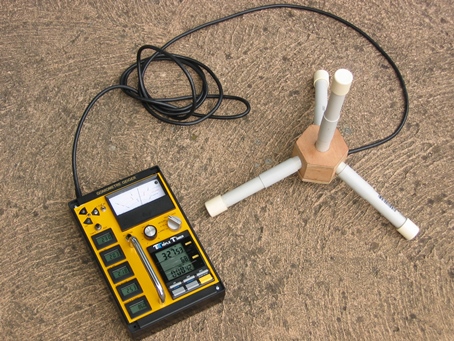
I did a preview and had to reduce it :-)
I recommand your video tuto, nice to you ihab17 !
Denis
|
| Damien68 |
Posted - 02/03/2023 : 10:03:15
Hi Denis,
if you measure a 35v pulse, it may come from the tuning of the probe of your oscilloscope, in the probe there is a adjustable capacitor which forms a capacitive divider with the non-normalized capacitance of the scope input. |
| ullix |
Posted - 02/03/2023 : 07:51:20
quote:
1/ @Ullix,
You should simulate this network with the zero ohm (some micro secondes) tube when it occurs a particle. Without C6 (yes it is 220 pf) you would see a RH3/110ko *510V = 16Vpulse a the tube out. With my oscillo I observed rather 35V pulse. I should have taken photos but I have to open again the GMC600 :-(. Please believe me.
When you place C6, this pulse is decreased to 6Vp but enlarged.
Please do the experiment, but before you have to protect V3 by changing R13 R15 as 2100k/3k9. The glitche at a constant rate of 400µs is not a double particle ... Please look at again the video compare light and total count ...
Sorry, but a video of 24frames/s has a frame-to-frame duration of 40000us. Here we are talking about pulses with a length of 1/100th of this. How can you possibly see this in a video? The data you have shown so far do not present evidence that your observation is any different from clean Poissonian events!
Once you demonstrate pulses with a "constant rate of 400µs" you have a case, but I surely have not yet seen this in your data!
Did I see this right: you change R13+R15 to 2.1039M? I guess as a voltage divider to lower the voltage at V3. However, this increases the discharge time constant of this 2nd RC network to 220pF*2.1M= 460us, almost as long as the charge time? How should this be a benefit?
quote:
2/ @all,
On https://www.lndinc.com/products/geiger-mueller-tubes/7317/
I don't find the conversion factor for the LND7317 = 348,
they indicate >>> GAMMA SENSITIVITY Cs-137 (CPS/mR/HR) 58 - thus 580 CPM/Sv/h ? is it ok ???
???? You did look at Reply#22?
|
| ihab17 |
Posted - 02/03/2023 : 05:23:43
quote:
Originally posted by denistoulouse
Use HD to view the video better
https://www.youtube.com/watch?v=3GuOYtzsNDY
|
| ihab17 |
Posted - 02/03/2023 : 05:04:09
quote:
Originally posted by denistoulouse
I don't have the same forum possibilities on my screen .. nor proposition to add files or pictures ? is it BRAVE browser ?
I think I know what is your problem... I will send you a short video on how to insert photos and links |
| denistoulouse |
Posted - 02/03/2023 : 04:39:42
Hi all,
1/ @Ullix,
You should simulate this network with the zero ohm (some micro secondes) tube when it occurs a particle. Without C6 (yes it is 220 pf) you would see a RH3/110ko *510V = 16Vpulse a the tube out. With my oscillo I observed rather 35V pulse. I should have taken photos but I have to open again the GMC600 :-(. Please believe me.
When you place C6, this pulse is decreased to 6Vp but enlarged.
Please do the experiment, but before you have to protect V3 by changing R13 R15 as 2100k/3k9. The glitche at a constant rate of 400µs is not a double particle ... Please look at again the video compare light and total count ...
2/ @all,
On https://www.lndinc.com/products/geiger-mueller-tubes/7317/
I don't find the conversion factor for the LND7317 = 348,
they indicate >>> GAMMA SENSITIVITY Cs-137 (CPS/mR/HR) 58 - thus 580 CPM/Sv/h ? is it ok ???
3/ @ijad17
thank you for your re-scaling ! I don't have the same forum possibilities on my screen .. nor proposition to add files or pictures ? is it BRAVE browser ?
Denis
|
| ullix |
Posted - 02/03/2023 : 01:26:57
"Electricians" to the rescue - help is needed:
Here is an annotated cutout from Denis' notebook:
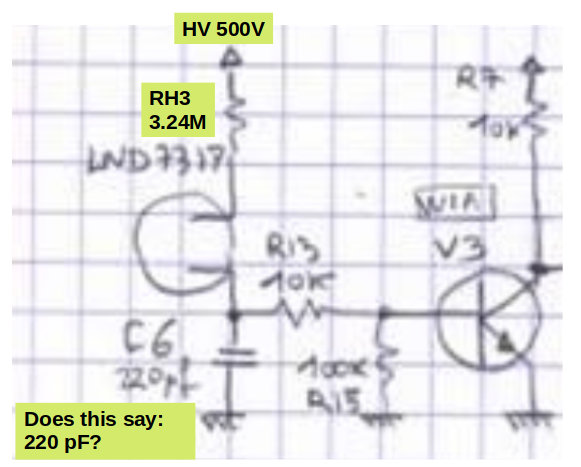
I do see two intertwined RC-networks:
The first is made up by RH3 and C6. When the tube fires its resistance becomes nearly zero, so C6 is charged from HV via RH3. The time constant is R*C=3.24MOhm*220pF (did I read the 220 correctly?) = 713us. Uiiih, this is a long time when we talk about native tube pulse lengths of 40us!
The 2nd RC-network is C6 and R13+R15. This forms a time constant of 220pF*110kOhm = 24us, which is more in line with the expected time constants. (This ignores influence of V3; if V3 had to be included, the time constant could only be faster.)
In combination we have the slow charging of C6 for the duration of the tube pulse of 40us, while at the same time a fast discharge via (R13+R15).
At this point my electric competence is fading a bit. What is the combined effect? Can this be calculated? Is there some simulation possible? Perhaps even online?
Given that Denis observes pulse lengths of 140us, it looks to me like tube performance is castrated a bit; it could be made faster, and support higher count rates. Or not? After all, the tubes native pulse length is only 40us!
But it also does NOT look like a defect in the GMC-600 design. Or does it?
P.S. I love the pics in Ihab's posts ;-))
|
| ullix |
Posted - 02/03/2023 : 00:35:59
quote:
@Ullix,
Ok, I discover your pictures after sending my last post :-) they illustrate exactly what I wrote ! The parasitic pulse comes on the tube pulse, and depending on its time position, it triggers a double pulse on R7 when crossing the 0.7V on V4 base. Thank you for these pictures ... at a right scale :-)
No, they don't illustrate what you wrote!
It is nothing parasitic, it is plain old radioactive decay governed by Poisson distribution. Look at my Reply#33: The succession of pulses is determined by an exponential distribution, i.e. the majority of pulses come in close succession. It just so happens that sometimes the second pulse is so close that it sits on the previous pulse's tail.
This is NOT an indication of something wrong with GMC-600+!
|
| ullix |
Posted - 02/03/2023 : 00:24:51
quote:
On https://www.lndinc.com/products/geiger-mueller-tubes/7317/
I don't find the conversion factor for the LND7317 = 348,
they indicate >>> GAMMA SENSITIVITY Cs-137 (CPS/mR/HR) 58 - thus 580 CPM/Sv/h ? is it ok ???
No, not ok. Figure it out!
Hint: it's the "units" !
Need more hints? See chapter Calibration in the GeigerLog manual.
|
| Damien68 |
Posted - 02/02/2023 : 06:46:45
quote:
Originally posted by ihab17
quote:
Originally posted by Damien68
Do I get it that C6 is then a MUST HAVE for the counter to work properly or a nice to have component that might help with high count levels? Because, if I am not mistaken, Denis shorted it, hence as if it not there. Illuminate me
I don't know, but based on the Denis's scope the pulse is too enlarged, and it shouldn't be distorted at all, maybe after (to garanteed a few uS) if necessary for the microcontroller, but in a more controlled way.
EDIT:personally after reflection I think it's better to derive the signal that's to say catch its variations (rising edge and falling edge), and not integrate it as is done by C6. |
| ihab17 |
Posted - 02/02/2023 : 06:37:48
quote:
Originally posted by Damien68
Do I get it that C6 is then a MUST HAVE for the counter to work properly or a nice to have component that might help with high count levels? Because, if I am not mistaken, Denis shorted it, hence as if it not there. Illuminate me
|
| Damien68 |
Posted - 02/02/2023 : 06:31:31
about the enlargement of the pulse and the deadtime:
(-) one thing that certainly everyone knows:
when a particle is detected it causes a short circuit in the tube, it discharges then recharges, the pulse that we observe is on the measurement of the current crossing the tube (charging current in fact)
we know that when the tube is not charged (under a certain voltage) it cannot detect new particles. we then speak of dead time, then we make a statistical correction based on the fact that we did not observe the total over a full second or a full minute minute.
(-) another thing:
Now what happens, the counter enlarge not the current pulse but its measurement with a capacitor. Ohhhhhh
this means that the pulse will be active for 140uS it is longer than the dead time of the tube which is 40uS this means that the pulse will remain active even when the tube is already recharged and is able to generate a new pulse, if the tube generates a new pulse while the old pulse is still active, the two pulses will merge and only one will be observed.
ditto if there are many more pulses all within a maximum of 140uS of each other, we will see only one because C6 will remain charged (over 0.6v) all the time. |
| ihab17 |
Posted - 02/02/2023 : 06:14:24
quote:
Originally posted by denistoulouse
I put myself in the shoes of a person discovering this video on youtube, that he has with the title the object what he will watch ... "double counts on single clics" :-)
I got your point. But nobody will ever find the video because it is UNLISTED. Which means that you will not see it on YouTube if you search for it, and you have to know the link for it to see it. I did this on purpose only to help Ullix and forum managers see the video quickly, this is why I said that the video name doesn't matter :)
Master Ullix, I did those screenshots from my cell phone! I will try to reduce them as much as I can. Be patient
|
| denistoulouse |
Posted - 02/02/2023 : 04:20:46
Hi all,
On https://www.lndinc.com/products/geiger-mueller-tubes/7317/
I don't find the conversion factor for the LND7317 = 348,
they indicate >>> GAMMA SENSITIVITY Cs-137 (CPS/mR/HR) 58 - thus 580 CPM/Sv/h ? is it ok ??? |
| denistoulouse |
Posted - 02/02/2023 : 03:58:10
@Ullix,
Ok, I discover your pictures after sending my last post :-) they illustrate exactly what I wrote ! The parasitic pulse comes on the tube pulse, and depending on its time position, it triggers a double pulse on R7 when crossing the 0.7V on V4 base. Thank you for these pictures ... at a right scale :-) |
| denistoulouse |
Posted - 02/02/2023 : 03:53:30
@Ullix,
thank you for your very interesiting comments.
1-> On my video, the small excel table indicates where obvious doucle counts can be seen. For me it is far too much than natural in one minute.
2-> 348 : When I looked at calibration values in my GMC soft, I saw 348, value confirmed by my measurement !
3-> For the dead time value to enter, if I well understand, I should indicate the true pulse lengh the counter receives, thus the R7 pulse length, is it ?
4-> I believe that C6 has been placed by designer to break the peak voltage value to the V3 base (35Vp), instead of my method which above all must not lengthen the pulse to allow high radioactivity measurements
5-> Again, the glitches I described are not natural. I did other electronic observations on the GMC600+ (not shown here) which shows that the glitche appears randomly on oscillo pulse pictures. In fact, the glitche recurrence is 400µs. Before I discover this, I was very early alerted by strange counts when I observed in text mode the total count while earing clics. This was confirmed by the fact that my GMC600+ measured was almost above my other geiger 1503, everywhere.
If the factory value inside was 420, I would'nt have seen it !
For GQ company from my point of view, this electronic adjustment is minimal : remove C6, change the R13 R15 values, modify dead time value and count factor conform to LND value, and all becomes OK again :-)
@ihab17, I agree with your answer on the usefulness of the video.
However, I like precision and research always to the maximum in my technical approaches, That's why I proposed a title that corresponds to the real subject of this video. I put myself in the shoes of a person discovering this video on youtube, that he has with the title the object what he will watch ... "double counts on single clics" :-) Thank you again for your initiative, and I would also be of the opinion of Ullix, to remove the monstrous photos that disturb the thread of the subject, what do you think ?.
Denis |
| ullix |
Posted - 02/02/2023 : 03:51:00
As an example for double-counts: here is a pic from an old experiment on GMC300E+ with tube M4011.
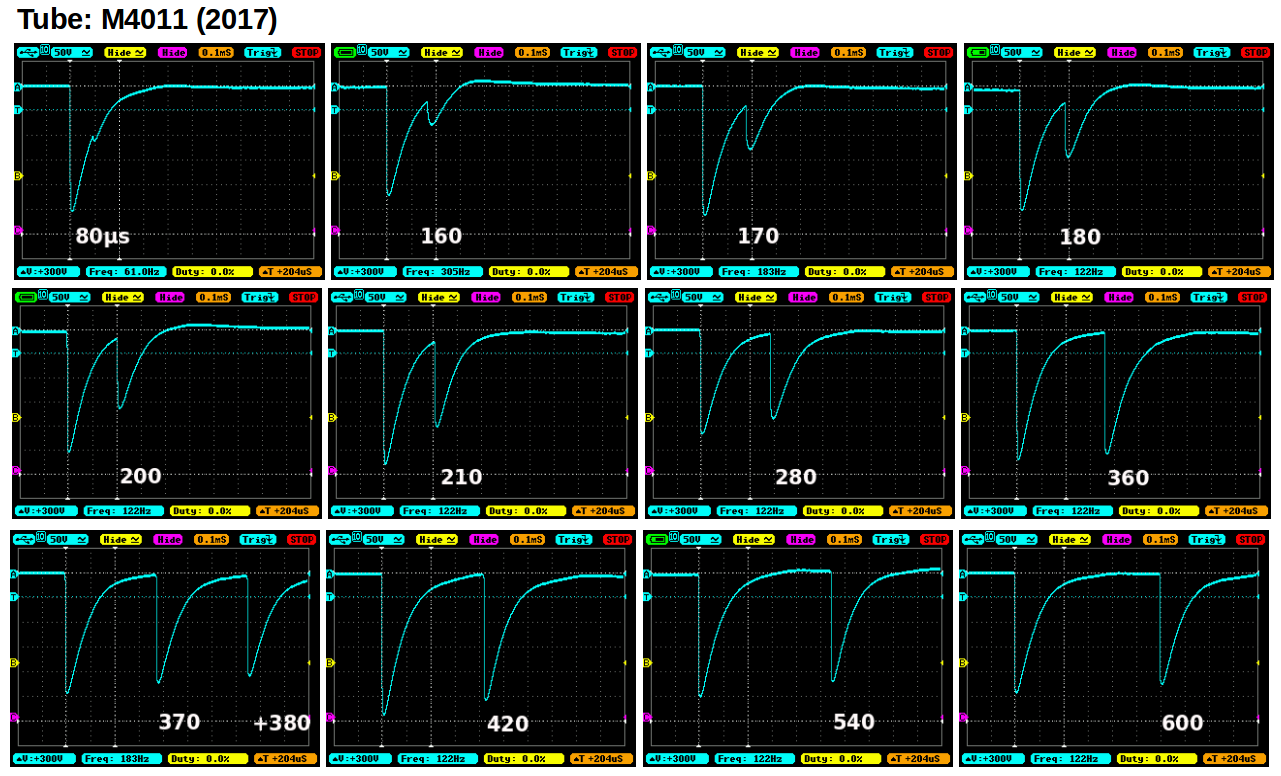
This and more on it in this topic:http://www.gqelectronicsllc.com/forum/topic.asp?TOPIC_ID=4598
I can't tell when the second event becomes detectable.
|
| ullix |
Posted - 02/02/2023 : 03:12:01
quote:
On my video, you have to look at the "total count" line while listening to the audio clicks of the counter. Despite the small delay in updating this line by the GMC600+, we often see isolated clicks turn into a +2 count! watch the video again with that eye!
With that explanation I now see what you mean. It could be an indication, however, this evidence is weak. For anything of a Poissonian distribution the time difference between 2 successive counts is distributed exponentially, as in this picture showing synthetic data with a CPSmean=1000:

Left side shows the CPM, right side the Delta-Time. The first Delta-Time column has 1/3rd of all counts! Counts coming close together is the nature of the beast; jumping by 2 counts is not unexpected. Your osci pics might be stronger evidence, but how can you conclude that a second pulse is due to the High-Voltage power supply starting a regulation cycle?
quote:
I checked the calibration of the GMC600+, it is set at 348cpm/µSv/h and not 420.
Well, this is strange. Is it still 348 after a factory reset? In firmware 2.42 it is 420, and in firmware before it had been 379, and I have never seen 348 in any 600 counter.
quote:
I also saw that we can define the dead time of the tube, defined at 270 µSeconds in my GMC600+, and the possibilit to take it into account or not for the measurement.
Not quite. This dead time definition comes into play (and only if enabled) at higher count rates. It is a mathematical correction of count numbers; it has nothing to do with the count registration process. If programmed correctly, you should not see any effect at the current low count rates. I suggest to NOT enable the deadtime correction!
quote:
By observing the pulses at the output of the tube with the oscilloscope, they are of the order of a few tens of microseconds when I have removed the capacitance. I don't know how the GMC600 software takes this dead time into account, when it is set to be taken into account?
The deadtime of a Geiger tube is due to physical processes inside the tube, and should not be changeable by external circuits (except somewhat by anode voltage). A pulse length of "a few tens of microsec" sounds right, given the manufacturers spec of 40us.
And all you did as modification was the complete removal of capacitor C6? With C6 in place, you found the pulse lengthened to 140us? What, by your judgement, was the intention of putting a C6 there in the first place?
The glitches you refer to, could well be of natural origin. Looking at your hand written notes the glitch comes toward the end of the pulse. At this point the tube may have recovered partially, and a gamma quantum may have triggered the next tube discharge, but as it had not yet fully recovered, only a small pulse resulted. I have seen this in my own tests with an osci as well. What makes you conclude that this NOT from natural origin?
|
| ullix |
Posted - 02/02/2023 : 01:16:01
@ihab: it is such a joy to see you rendering the whole topic illegible by posting these monster pictures! Grrrrr... |
| ihab17 |
Posted - 02/01/2023 : 15:51:53
quote:
Originally posted by denistoulouse
@ihab17,
What do you think of the title of the video which would be more precise
"GMC 600+ frequent double count for unique shots observed"
Thank you again :-)
Dennis
Frankly speaking the title could be anything. The most important thing is that you have discovered something that could solve a big issue we have been facing since a long time and we should collaborate on this together to find a good solution so as the counter becomes more reliable. For the moment it doesn't seem to be a reliable counter either because of a HW design (i.e. inadequate electronic components, thus needs a HW change of some electronic components) or firmware issue (i.e., some software based control in the firmware that has to be fixed).
Ullix here is the man you should be talking to |
| denistoulouse |
Posted - 02/01/2023 : 15:39:40
@ihab17,
What do you think of the title of the video which would be more precise
"GMC 600+ frequent double count for unique shots observed"
Thank you again :-)
Dennis |
| ihab17 |
Posted - 02/01/2023 : 15:35:56
Video title changed
This is how you can attach a photo. This forum is based on BBCode
Hint: your images must not contain spaces in the file names. Just rename them BEFORE you upload them




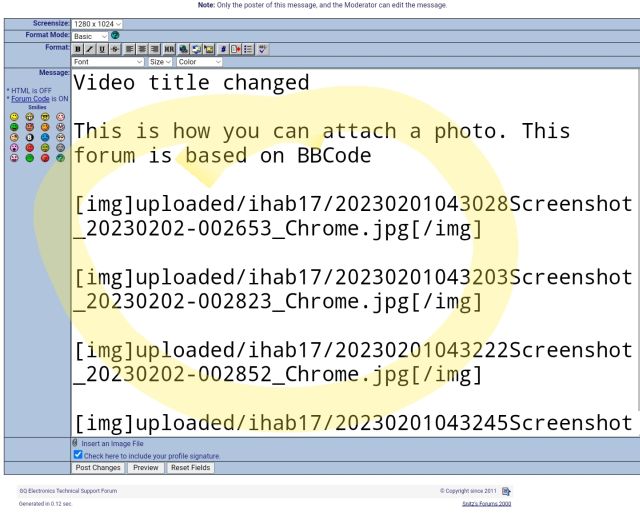 |
| denistoulouse |
Posted - 02/01/2023 : 15:32:14
ihab17, Thank you a lot for your fast action :-))
Denis |
| denistoulouse |
Posted - 02/01/2023 : 15:18:17
Hi ihab17, Thank you very much for the transfer of my documents on the forum. Does everybody can do it, or have you specific advantage ?
I just wish one modification please, could you modify the youtube video title by "GMC 600+ double counts double glitches observed"
because I don't like to see my identity on the web ! Thank you a lot by advance for your modification ihab17.
Denis |
| ihab17 |
Posted - 02/01/2023 : 13:57:43
quote:
Originally posted by denistoulouse
Bonjour Damien68, je vous ai envoyé un message personnel sur ce forum. Contactez moi en off par téléphone. A bientot Denis
By the way, this is your video https://www.youtube.com/watch?v=DGkwgmeyCOU and these are your images
Sorry for the large images... @Ullix don't get upset!
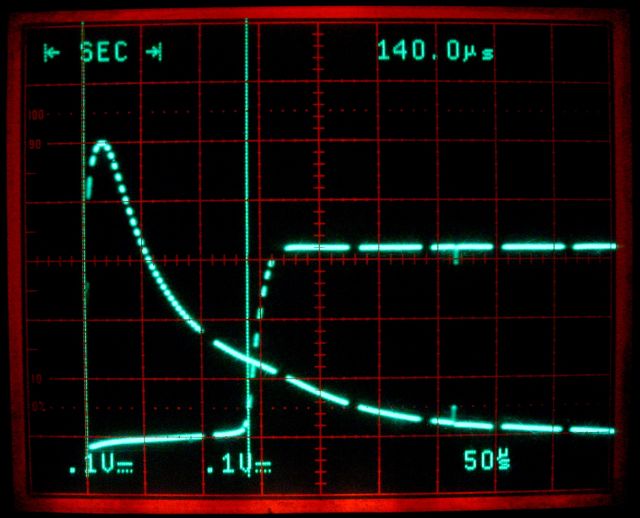
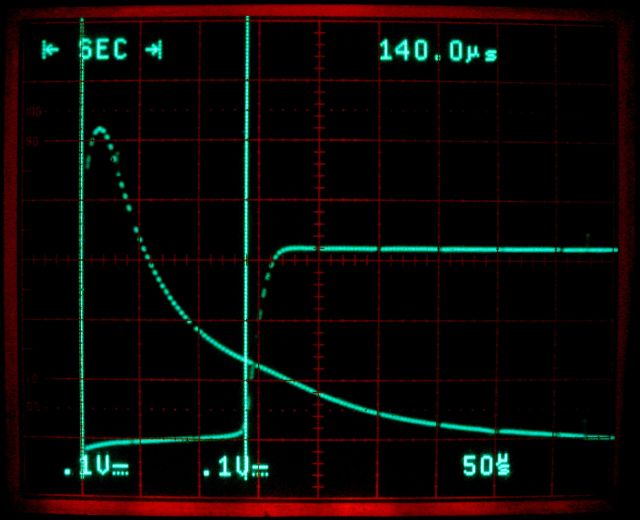
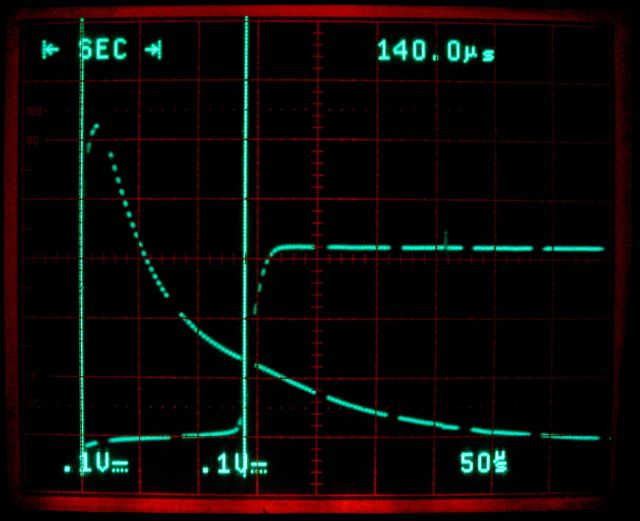
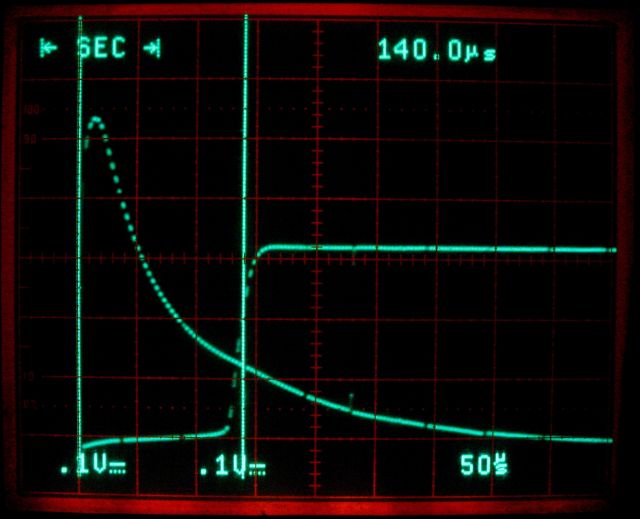
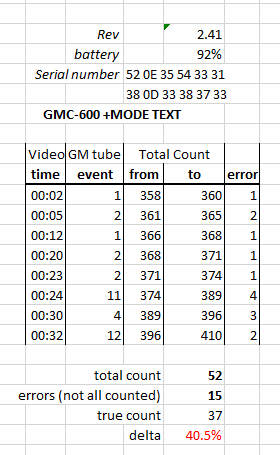
Here are some high resolution images of the internals of the counter
https://www.amazon.it/photos/share/VrkP3r4b1GzSCQ1I1z505KL2Ex03t0z6KTGJGyC7Jhj |
| ihab17 |
Posted - 02/01/2023 : 13:42:24
quote:
Originally posted by denistoulouse
Bonjour Damien68, je vous ai envoyé un message personnel sur ce forum. Contactez moi en off par téléphone. A bientot Denis
I don't know if this is relevant, but I have noticed from your Excel sheet that your firmware is 2.41 while the latest firmware I am aware of is 2.42. Maybe this is irrelevant, but it is better of you install the latest firmware first then perform the analysis again.
@EMFDEV, the latest firmware is 2.42 right? You haven't release a new one right? |
| EmfDev |
Posted - 02/01/2023 : 12:20:18
@denistoulouse You can also edit your comments to attach pictures. |
| EmfDev |
Posted - 02/01/2023 : 11:12:27
Hi denistoulouse, we emailed you few times and all our emails since last week bounced back.
Delivery has failed to these recipients or groups:
"denis" (youremailhere)
Your message couldn"t be delivered. Despite repeated attempts to contact the recipient"s email system it didn"t respond.
Contact the recipient by some other means (by phone, for example) and ask them to tell their email admin that it appears that their email system isnt accepting connection requests from your email system. Give them the error details shown below. It"s likely that the recipient"s email admin is the only one who can fix this problem.
For more information and tips to fix this issue see this article: https://go.microsoft.com/fwlink/?LinkId=389361. |
| denistoulouse |
Posted - 02/01/2023 : 10:47:20
Bonjour Damien68, je vous ai envoyé un message personnel sur ce forum. Contactez moi en off par téléphone. A bientot Denis |
| denistoulouse |
Posted - 02/01/2023 : 10:44:28
Hi Ulix,
Thank you for your precision on the "s" of Sv. May God bless the geniuses, and that men honor their geniuses as Gods.
It's my turn not to be a specialist in statistics and radioactivity measurements, but clearly random and frequent double counts like my GMC600+ (perhaps a simple electronic anomaly of mine, but I have my doubts...) , at a potential recurrence of 400 µseconds, (rhythm of the parasite of the HV power supply) must introduce a bias into the statistical curves. At very high radioactivity, we could have a systematic addition of counting, 1/400µs would give +150000 fictitious CPM !
On my video, you have to look at the "total count" line while listening to the audio clicks of the counter. Despite the small delay in updating this line by the GMC600+, we often see isolated clicks turn into a +2 count! watch the video again with that eye!
I checked the calibration of the GMC600+, it is set at 348cpm/µSv/h and not 420. At room temperature, it now gives the same values as my quartex RD1503.
I also saw that we can define the dead time of the tube, defined at 270 µSeconds in my GMC600+, and the possibilit to take it into account or not for the measurement.
By observing the pulses at the output of the tube with the oscilloscope, they are of the order of a few tens of microseconds when I have removed the capacitance. I don't know how the GMC600 software takes this dead time into account, when it is set to be taken into account?
If the forum was HTML, I could include pictures to comment !
Thank you for this exchange Ullix.
Denis |
| ullix |
Posted - 02/01/2023 : 07:35:58
@Denis: this is great information, and gives hope solve the mystery behind a stubborn defect which I have observed in GMC-600 counters.
While I think I get the gist of what you are saying, I am not "electric" enough to comprehend the details. I downloaded your data (thanks) but I am not even sure what your osci traces show, and where you see the double peaks, and when not, and what feature in the video hints at double-counts. Perhaps some arrows pointing to the relevant events or markers? Some "slower" explanation for those in need ? ;-)
But I am sufficiently "physics" to get a headache from wrong units:
Sv (capital S, small v) is honoring the Swedish physicist Sievert, and is a unit for radiation dose, the unit we would use to compare radiation sources and classify danger levels.
S (capital S only) is honoring the German engineer (and multi genius) Siemens, and stands for Conductance, the inverse of Resistance, like units 1 S = 1 / Ohm.
Back to the counter: I had noticed that it is not possible to get a clean Poisson distribution when a GMC-600+ was used to record counts, while GMC-300 and -500 counters, and several other counter brands, consistently come up with proper data. This has been discussed at length (with no conclusion yet) here: https://sourceforge.net/p/geigerlog/discussion/general/thread/0c5698d25e/ At this moment, I' say don't buy the 600. Wait until this problem is fixed.
With your discovery we may get a new handle on this issue.
What I very eagerly want is that you run your counter while recording data using my software GeigerLog ( https://sourceforge.net/projects/geigerlog/ ) and let me have the data.
Two runs would be needed, each for about 5 hours at background rate with 1 sec cycle time:
#1: the counter is exhibiting the glitches
#2: the counter is "repaired" and is NOT showing the glitches.
There are other issues, like pulse length: The tube manufacturer specifies a minimum dead time of 40us; not in agreement with neither 140us, nor with 5us! But we can let this rest for another day.
|
| denistoulouse |
Posted - 02/01/2023 : 05:31:07
Hi everybody, @Ullix,
Thank you for your quick responses. Thank you Ullix for your values.
In fact, I saw that my GMC600+ surevaluates at about 20% the ambiant value with its double counts. You will see in the video and xls files inside the link below.
20% is just the ratio between 348 and 420 ! After fixing the double pulse I found 348 and 364 for the conversion factor !
On https://www.grosfichiers.com/nUDthbDYvZF you can upload my investigation files, please let me know what you think about it.
I have been very surprised to see on this forum GMC600+ indicating more than 2 000 000 CPM face to a cesium source, because as you see in my description, the filtered pulse in a standard GMC600 is roughly 150 µs ... 400 000 CPM maximorum theoric ...
Thank you. Denis
|
| ullix |
Posted - 02/01/2023 : 00:32:04
@Denis: Interesting observations, particularly in the light of the troubles I have seen with a GMC-600+! Could you please be more specific as to what you observed, how you did the observation, and what measures you have taken to overcome it? I understand correctly that this did cure the problem?
The so called calibration points can be set from the counter, which, however, is cumbersome. You can set it from GeigerLog more easily. GeigerLog is available from: https://sourceforge.net/projects/geigerlog/
The last readout by GeigerLog from a GMC-600+ that I have seen is:
Device Calibration Points: CPM = µSv/h CPM / (µSv/h) µSv/h/CPM
Calibration Point #1: 420 = 1.000 420.00 0.00238
Calibration Point #2: 4200 = 10.000 420.00 0.00238
Calibration Point #3: 42000 = 100.000 420.00 0.00238
It is a bit mysterious that this results in a Sensitivity of the tube of 420 CPM/(uSv/h), while the tube manufacturer specifies only 348, some 20% less! Putting a tube into a case can only reduce sensitivity, not improve it. I'd set it for the more realistic 348!
|
| Damien68 |
Posted - 02/01/2023 : 00:01:13
Hello Denis, I am an french electrician too, your modification is to enlarge C3?
EDIT: je suis de la région brestoise. |
| ihab17 |
Posted - 01/31/2023 : 23:42:43
quote:
Originally posted by denistoulouse
Hi all,
Hello and welcome to the forum. I also own a 600+ and I am curious what exactly did you do. I am not an expert in electronics like you, nevertheless I would like to know what did you do. Thanks |
| denistoulouse |
Posted - 01/31/2023 : 13:00:53
Hi all,
I am a new user of a GMC600+ and I am electronician (excuse for my bad english). I have opened my GMC600+ because I saw very often double counts on the total counting view, in a low level 0.2 uS/h, while bips was single. Il represented roughly 20% overcount ! After opening my GMC600+ it appears that parasitic glitches due to HV supply switching triggered additional pulses on the first transistor V3. I fixed this electronic glitche, and now the radioactivity level is minored compared to an other counter in ambiant levels.
I have seen that it is possible to recalibrate the GMC600+ by entering 3 couple values CPM<->µS/h experimentally.
Does anybody knows the 3 couples µS<->CPM values recorded in GMC600+ factory sofware ?
I can send to interested guys the hardware modifications and explanations in my GMC600+ I did to fix the glitches. Please ask me.
Thank you for your information on the three GMC600+ calibrating couples CPM<->µS/h ...
|
| EmfDev |
Posted - 01/13/2023 : 16:59:29
Please be patient. Thank you. |
| ullix |
Posted - 01/13/2023 : 00:51:26
I did email again.
What strange email system do you have that so many users complain that the your "support" had not been reached?
|
| EmfDev |
Posted - 01/12/2023 : 14:59:45
You can email them again. |
| ullix |
Posted - 01/12/2023 : 00:27:08
@EmfDev: I followed your suggestion to contact support re the calibration situation. I did this on Jan 5, which is now a week ago, but so far did not get a response.
Are you still working on an answer?
|
| ullix |
Posted - 01/05/2023 : 03:44:55
@mimichris: for a calibration it is NOT necessary to have an energy-compensated tube!
Your calibration will be valid for whatever is used as radioactivity source. And as the energy-compensation is never perfect, this will apply also to those tubes.
And it is NOT valid for anything else.
In particular, it is NOT valid when you source emits beta!
Energy compensation is not very helpful for hobbyists, because it is achieved to reduce(!) the sensitivity down to the lowest level over a certain range, while hobbyists tend to want the highest possible sensitivity. Including for betas!
|
| mimichris |
Posted - 01/05/2023 : 01:18:07
Except that the GMC counters are not compensated and do not indicate the correct value in µSv according to the radioactive elements. Even calibrated with cesium for example. |
| EmfDev |
Posted - 01/04/2023 : 10:49:37
Hi ullix, please email support@gqelectronicsllc.com for more information about the calibration process. |
| ullix |
Posted - 01/04/2023 : 01:47:05
quote:
Originally posted by ullix
quote:
Hi Bob, it was calibrated in a lab.
@EmfDev: this is good to hear! I am sure GQ has chosen a reputable lab, which has certified their work, as a reputable lab would do.
Can you please tell us the name of the lab, and provide a copy of the certification. If this is done properly, it will tell us the conditions under which the certification was done, like which radioactive source was used, its intensity, distance to counter, and counter geometric arrangement.
@EmfDev: my question so far remains unanswered, and I'd like to repeat it here: what proof can you provide that there ever had been a calibration done?
|
| Bobakman |
Posted - 12/30/2022 : 17:03:01
quote:
Originally posted by EmfDev
I was not there when it was calibrated. If you want more information of the calibration process, please email support@gqelectronicsllc.com
E-Mail sent thanks.
Bob |
| ihab17 |
Posted - 12/30/2022 : 06:39:05
quote:
Originally posted by ullix
quote:
Hi Bob, it was calibrated in a lab.
@EmfDev: this is good to hear! I am sure GQ has chosen a reputable lab, which has certified their work, as a reputable lab would do.
Can you please tell us the name of the lab, and provide a copy of the certification. If this is done properly, it will tell us the conditions under which the certification was done, like which radioactive source was used, its intensity, distance to counter, and counter geometric arrangement.
Ullix inserting his fingers in the wound! And now... AYYYYAAAAAAAAAAAAAAAAAAAAAAAAAAAA :) |
| ullix |
Posted - 12/30/2022 : 03:22:30
quote:
Hi Bob, it was calibrated in a lab.
@EmfDev: this is good to hear! I am sure GQ has chosen a reputable lab, which has certified their work, as a reputable lab would do.
Can you please tell us the name of the lab, and provide a copy of the certification. If this is done properly, it will tell us the conditions under which the certification was done, like which radioactive source was used, its intensity, distance to counter, and counter geometric arrangement.
|
| EmfDev |
Posted - 12/29/2022 : 16:57:51
I was not there when it was calibrated. If you want more information of the calibration process, please email support@gqelectronicsllc.com |
| Bobakman |
Posted - 12/29/2022 : 09:34:25
quote:
Originally posted by EmfDev
Hi Bob, it was calibrated in a lab.
Understood can you elaborate on the calibration procedure and is it documented
for each unit calibrated?
Thanks, Bob |
| EmfDev |
Posted - 12/28/2022 : 10:43:41
Hi Bob, it was calibrated in a lab. |
|
|

